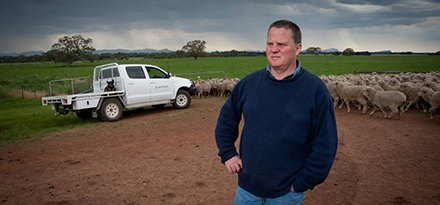Australian farming and forestry are joining forces ahead of November’s UN Climate Change Conference 2022 to promote ‘climate smart farming with forestry’ as a major solution to help Australia meet more ambitious climate targets, contribute to global food security and grow timber for our homes and farms. Source: Timberbiz
The National Farmers Federation and Australian Forest Products Association will promote the synergies that can be achieved from farming and forestry when they present at COP 27 in November to an audience of key Australian and international politicians, environmental groups and policymakers.
NFF Chief Executive Officer Tony Mahar said COP 27 is a key opportunity to build on effective climate policy for Australia.
“Agriculture is a big part of the solution to meeting carbon reduction targets,” he said.
“There are many actions our farmers are already taking and adding trees at the right scale and location to primary farm enterprises can be a climate solution that ticks many boxes. “When done properly it can help Australia achieve its emissions reduction targets, complement traditional farming enterprises with financial, biodiversity and stock shelter gains, and help solve Australia’s timber supply crisis.
“Increased farm productivity also means more food on the table, a critical issue as the world faces a food security crisis. The time is right for a new approach to farm forestry to be a central solution.”
Chief Executive Officer of AFPA, Ross Hampton, said growing forestry production trees on farms should be the first thing policy makers look to when it comes to climate solutions.
“Production trees fight climate change while literally growing a sustainable and vital supply of timber and fibre for Australia,” he said.
“And it is truly a win, win for farmers. Not only is there the chance to become carbon neutral as a property by adding an appropriate number of production trees, but there is also the added benefit of a windfall gain of tens or hundreds of thousands of dollars when the timber is ready for harvest and replanting.”
Research released last year revealed that adding timber production trees to farms can yield significant productivity and financial benefits for landowners, lifting farmgate profitability through high value modular agroforestry [1] showed major benefits including increased shelter for stock, biodiversity improvements and land restoration benefits. At one location trees increased pasture productivity by 30%.
Wool, lamb, and beef farmer Mark Wootton will join the NFF and AFPA’s push for an uptake in farm forestry, having realised major benefits after planting trees on Jigsaw Farms, the property he owns with his wife Eve Kantor outside Hamilton in Western Victoria.
“About 20% of our land has been converted to trees, half of that for farm forestry and half for biodiversity,” Mr Wootton said.
“The benefits have been amazing. We are now able to carry a far greater number of sheep and cattle thanks to the shelter the trees have provided, reducing losses from windchill. There have also been marvellous biodiversity dividends. We counted 45 bird species in the late 1990s. Now we have more than 170. In addition, we are soon to benefit from a major financial gain when our production trees are harvested for timber.
“I know plenty of other farmers who would get involved in farm forestry if the business of carbon farming was made simpler and the management of the tree crop made easier.”






